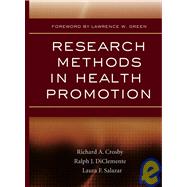
Ralph J. DiClemente is Charles Howard Candler Professor of Public Health and associate director, Emory Center for AIDS Research. He holds concurrent appointments as professor in the School of Medicine, the Department of Pediatrics, in the Division of Infectious Diseases, Epidemiology, and Immunology; the Department of Medicine, in the Division of Infectious Diseases; and the Department of Psychiatry. He was recently chair, the Department of Behavioral Sciences and Health Education at the Rollins School of Public Health, Emory University. DiClemente was trained as a health psychologist at the University of California, San Francisco, where he received his Ph.D. degree (1984) after completing an S.M. degree (1978) in behavioral sciences at the Harvard School of Public Health and his B.A. degree (1973) at the City University of New York.
DiClemente’s research interests include developing decision-making models of adolescents’ risk and protective behaviors. He has a particular interest in the development and evaluation of theory-driven HIV/STD-prevention programs for adolescents and young adult women. He has published numerous books and journal articles in the fields of adolescent health and HIV/STD prevention. He currently teaches a course on adolescent health and serves on numerous editorial boards and national prevention organizations.
Laura F. Salazar is currently an assistant research professor in behavioral sciences and health education at the Rollins School of Public Health at Emory University. Salazar completed her B.S. degree (1982) in business management from the State University of New York at Buffalo. After a brief career in business, and raising a family, she pursued an M.A. degree (1996) and a Ph.D. degree (2001) in community psychology at Georgia State University in Atlanta, Georgia.
Salazar’s research interests focus on examining the societal, community, and institutional influences of certain health risk behaviors, such as sexual risk behavior and violence against women. She also holds a keen interest in examining the intersection of these two health risks and how they should be addressed simultaneously through the development of innovative programs. She currently teaches graduate courses in theory and applied research methods. She has published many scientific articles in peer-reviewed journals related to these health issues, and is also the author of numerous book chapters.
|
ix | ||||
| Foreword | xiii | ||||
| Acknowledgments | xv | ||||
| The Editors | xvii | ||||
| The Contributors | xix | ||||
|
1 | (72) | |||
|
3 | (20) | |||
|
|||||
|
|||||
|
|||||
|
23 | (18) | |||
|
|||||
|
|||||
|
|||||
|
41 | (32) | |||
|
|||||
|
73 | (154) | |||
|
75 | (32) | |||
|
|||||
|
|||||
|
|||||
|
107 | (22) | |||
|
|||||
|
|||||
|
|||||
|
129 | (21) | |||
|
|||||
|
|||||
|
|||||
|
150 | (49) | |||
|
|||||
|
|||||
|
|||||
|
199 | (28) | |||
|
|||||
|
|||||
|
|||||
|
227 | (142) | |||
|
229 | (31) | |||
|
|||||
|
|||||
|
260 | (29) | |||
|
|||||
|
|||||
|
|||||
|
289 | (28) | |||
|
|||||
|
|||||
|
|||||
|
317 | (30) | |||
|
|||||
|
|||||
|
|||||
|
347 | (22) | |||
|
|||||
|
|||||
|
|||||
|
369 | (60) | |||
|
371 | (29) | |||
|
|||||
|
|||||
|
|||||
|
400 | (29) | |||
|
|||||
|
|||||
|
|||||
| Name Index | 429 | (6) | |||
| Subject Index | 435 |
The New copy of this book will include any supplemental materials advertised. Please check the title of the book to determine if it should include any access cards, study guides, lab manuals, CDs, etc.
The Used, Rental and eBook copies of this book are not guaranteed to include any supplemental materials. Typically, only the book itself is included. This is true even if the title states it includes any access cards, study guides, lab manuals, CDs, etc.